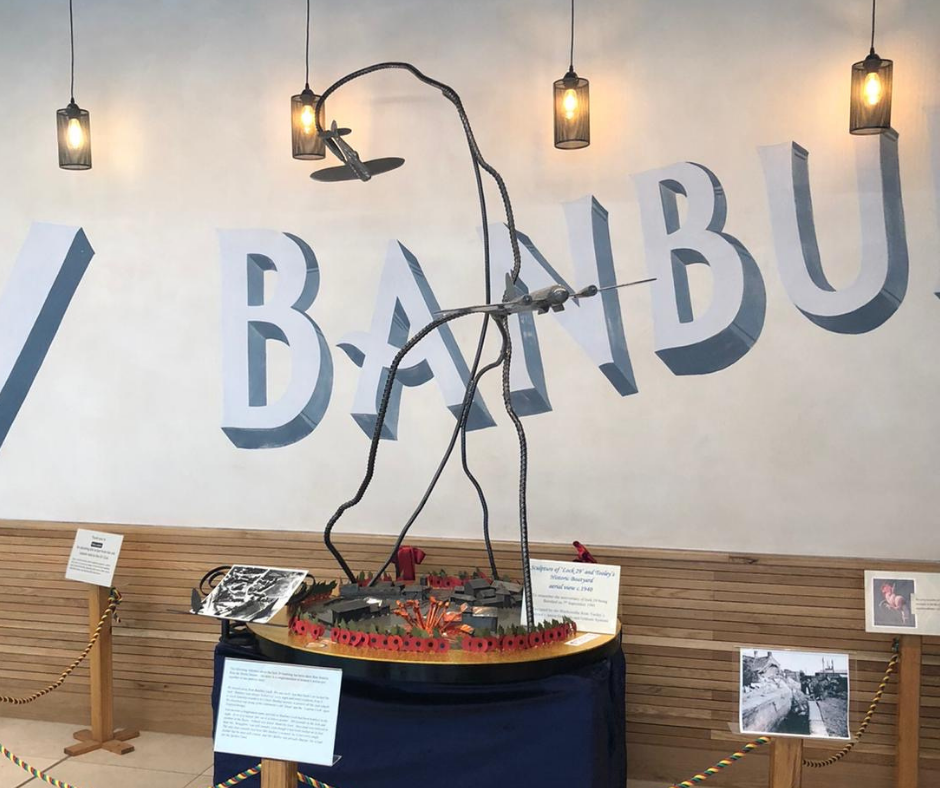The Bombing of the Lock
Community
September 2020 sees the eighty-year anniversary of the devastating bombing that hit Banbury back in 1940, destroying the lock upon which Lock29, Castle Quay and Tooley’s Boatyard sit. To commemorate this, Tooley’s have crafted a sculpture which will be in place in Castle Quay Shopping Centre from 5th September.

Some of you reading this may remember this time; many reading this will not.
It happened in the night, at around 2am, two bombs fell on Banbury. The canal lock was hit as well as the office of the lockkeeper, at the time a man called George Bloomfield. Incredibly, George survived the strike, but his career as a lock keeper ended. He went on to join the army but was medically discharged after two months. George, wife Dorothy and son Maurice then moved to Woodgreen Avenue in Banbury.
The lock was damaged badly, but the gates were not destroyed, this prevented Banbury from being flooded.
Nobody was killed this night fortunately. The only victim was Mrs Malloy’s cockerel, who lost his feathers but remained happily crowing.
A local family, the Beasley’s, made the decision to leave Banbury the night before the bombing. They moored their canal boats nearby at Twyford Bridge and left. Joyce Beasley recalls that after the lock was bombed and whilst it was being rebuilt, they had to unload goods at Castle Street wharf directly onto the horse and carts owned by the Co-op. Although they had coal fuelled lorries, during the war time they chose to use horse and cart to save money.
The repair to the lock still to this day bears the date 1940 and is located at lock number 29.
As the war continued, on 3rd October, the following month, a lone bomber flew over Banbury marketplace and dropped six bombs on the Banbury Gas Works and the Great Western Railway Goods Yard. This caused extensive and costly damage to the gas works, cutting the gas supply to the town off for six days. The railway mess room was directly hit, tragically killing six men that were inside and injuring four more.
The six men were William Harry Batchelor, Frederick John Hirons, Martin Humphrey, George Henry Noakes, Richard Walter Parker and Thomas Webb.
There were further attacks to the area before the war came to an end. This period in the history of Banbury will never be forgotten, and the sculpture created by Tooley’s Boat Yard will be a reminder of this time.
References:
Ramlin Rose: The Boatwoman’s Story – Sheila Stewart
Forging Ahead – Matthew Armitage
http://www.sjbradley.com/memorial/bombing.htm

